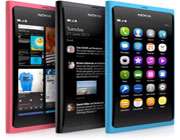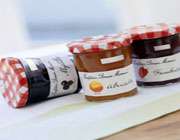
تازه هایی از دنیای دانش و فناوری (4)
در این مطلب در ادامه قسمت های (1) و (2) و (3) به تازه ترین اخبار هفته دنیای علم و فناوری می پردازیم.
هفت برابر شدن سرعت SSD با استفاده از حافظه های تغییر فاز

تیم دانشجویی مدرسه مهندسی جاکوبز دانشگاه کالیفرنیا اولین سری این درایو های SSD پر سرعت با نام Moneta را آماده نمایش کرده اند. البته مونتا تنها یک نوع جدید SSD نیست. بلکه این درایو یک PCM SSD یا اس اس دی با حافظه تغییر فاز است که اطلاعات را با استفاده از یک آلیاژ فلزی با نام chalcogenide ذخیره می کند. طبق گفته سازندگان، این کار باعث می شود که سرعت انتقال داده ها و ذخیره سازی اطلاعات، هفت برابر سریعتر از SSDهای موجود در بازار باشد.
PCM برای ذخیره اطلاعات از یک برنامه تولید گرما با جریان الکتریسیته استفاده می کند تا باعث تغییر آلیاژ مورد اشاره میان دو حالت کریستالی و بی شکل (غیر متبلور)شود. خواندن اطلاعات هم از طریق یک جریان ضعیف تر اما با همین مکانیسم صورت می گیرد، تا سیستم تشخیص دهد که آلیاژ در کدام یک از دو حالت بی شکل یا کریستالی قرار دارد.
این درایو اطلاعات را با سرعت تئوری 327 مگابایت بر ثانیه می خواند و ذخیره سازی و نوشتن اطلاعات هم با سرعت 91 مگابایت بر ثانیه انجام می گیرد. اما برای دیدن آزمایش های عملی و کاربردی آن باید تا کنفرانس DAC 2011 صبر کنیم. البته به گمانم هنوز زمان زیادی تا تجاری شدن این ابداع باقی مانده است.
San Diego, CA, June 2, 2011 -- A University of California, San Diego faculty-student team is about to demonstrate a first-of-its kind, phase-change memory solid state storage device that provides performance thousands of times faster than a conventional hard drive and up to seven times faster than current state-of-the-art solid-state drives (SSDs).
The device was developed in the Computer Science and Engineering department at the UC San Diego Jacobs School of Engineering and will be on exhibit June 7-8 at DAC 2011, the world’s leading technical conference and trade show on electronic design automation, with the support of several industry partners, including Micron Technology, BEEcube and Xilinx. The storage system, called “Moneta,” uses phase-change memory (PCM), an emerging data storage technology that stores data in the crystal structure of a metal alloy called a chalcogenide. PCM is faster and simpler to use than flash memory – the technology that currently dominates the SSD market.
Moneta marks the latest advancement in solid state drives (SSDs). Unlike conventional hard disk drives, solid state storage drives have no moving parts. Today’sSSDs use flash memory and can be found in a wide range of consumer electronics such as iPads and laptops. Although faster than hard disk, flash memory is still too slow to meet modern data storage and analysis demands, particularly in the area of high performance computing where the ability to sift through enormous volumes of data quickly is critical. Examples include storing and analyzing scientific data collected through environmental sensors, or even web searches through Google.
“As a society, we can gather all this data very, very quickly – much faster than we can analyze it with conventional, disk-based storage systems,” said Steven Swanson, professor of Computer Science and Engineering and director of the Non-Volatile Systems Lab (NVSL). “Phase-change memory-based solid state storage devices will allow us to sift through all of this data, make sense of it, and extract useful information much faster. It has the potential to be revolutionary.”
**********
نوکیا N9، تلفنی مبتنی بر MeeGo
استفان الوپ چندی پیش گفته بود که نوکیا اولین تلفن MeeGo ای خود را تا پایان امسال معرفی خواهد کرد. حالا این تلفن با نام N9 معرفی شده و سورپرایز های خوبی برای کاربرانش دارد. اما در چه زمینه هایی؟ این چیزی است که در ادامه به آن خواهیم رسید.در مورد مانیتور باید در انتظار یک صفحه نمایش 3.9 اینچی از نوع AMOLED باشید که رزولوشن آن برابر 854x480 پیکسل است. این صفحه نمایش جایگزین کیبرد هم شده و از این رو در N9 ما شاهد کیبرد فیزیکی نیستیم.

حالا اگر به سراغ حافظه برویم، درمیابیم که N9 با دو مدل 16 و 64 گیگابایتی از این نظر چیزی کم نگذاشته است. در باب رم هم، یک گیگابایت عدد کاملا خوب و راضی کننده ای است. مخصوصا وقتی که آن را با پردازنده 1 گیگاهرتزی OMAP و گرافیک قدرتمند SGX 530 مخلوط می کنیم؛ علاوه بر احساس رضایت از سخت افزار، می بینیم که نوکیا کمی از استراتژی های سخت افزاری قبلی اش فاصله گرفته است.
دوربین این مدل 8 مگاپیکسلی است و با لنز زاویه باز کارل زایس عرضه می شود. دیافراگم 2.2 به شما در گرفتن عکس های بهتر در نور کم کمک می کند و البته ضبط ویدئو با کیفیت 720p و نسبت 16:9 چیزی است که تجربه کار با این تلفن را برایمان لذت بخش تر می کند.
ضمنا باید گفت که این گوشی، 135گرم وزن دارد و اگر با آن موزیک گوش دهید، تا 50 ساعت شما را همراهی می کند. باتری N9، هنگام پخش ویدئو با کیفیت 720p تا 4.5 ساعت دوام خواهد آورد و می تواند برای 7 تا 11 ساعت مکالمه کافی باشد. سیستم GPS این گوشی به سیستم نرم افزاری ناوبری "پیچ به پیچ" برای رانندگی و قدم زدن مجهز است و راهنمای صوتی هم در نرم افزار Maps وجود خواهد داشت. وای فای هم طبق معمول در این گوشی تعبیه شده است. ضمن این که پشتیبانی از HTML 5 احتمالا باعث خوشحالی شما خواهد شد.
در مورد سنسور ها هم می توانیم به حسگر تنظیم نور خودکار، قطب نمای دیجیتال، شتاب سنج و سنسور مجاورت اشاره کنیم. اسلات میکرو سیم کارت هم در N9 موجود است. پشتیبانی از OpenGL ES 2.0 هم امکان ساخت بازی های خوب برای N9 را به وجود خواهد آورد.
N9 توانست کمی ما را نسبت به آینده ی نوکیا خوشبین تر کند. امیدواریم که این شرکت برای تلفن های مبتنی بر ویندوز فون 7 هم برنامه های خوبی داشته باشد و سخت افزاری به همین قوت را برای آن به کار بگیرد. البته انتظار توجه بیشتر به امر طراحی و زیبایی در گوشی های سطح بالای این شرکت کاملا به جا است. باید دید که N9 تا چه اندازه می تواند در بازار موفق شود و MeeGo تا چه اندازه می تواند رضایت کاربران را جلب کند.
Stephen Elop said that Nokia would unveil its first MeeGo device this year, and he just made good on his word with the N9 (also known as Lankku). Just as we spotted earlier, the N9 is a solid slab of 3.9-inch AMOLED screen (854 x 480) sans a keyboard or physical switches of any kind (well, aside from that oh-so-necessary volume rocker and camera button). The phone comes with 16GB or 64GB of onboard memory and 1GB of RAM wrapped in a polycarbonate shell that"s colored all the way through, so dings and scratches won"t show -- unless the wounds run deep, of course. An OMAP3630 1 Ghz processor does the computing while a PowerVR SGX530 GPU is around for graphical grunt work. Connectivity comes courtesy of quad-band GSM and penta-band WCDMA radios, plus Bluetooth 2.1, NFC, and GPS. There is also a dedicated camera button for the 8 megapixel wide-angle shooter, which is capable of aperture F2.2 for low light picture taking and true 16:9 720p video recording. Oh, and it"s an AF shooter, not EDoF.
The entire thing measures 116.45- x 61.2- x 7.6-12.1mm and weighs 135 grams, with a battery capable of lasting up to 50 hours (music), 4.5 hours (720p video), or between seven and 11 hours (GSM yappin"). You"ll also get gratis turn-by-turn drive and walk navigation with voice guidance in Maps, a dedicated Drive app, proximity sensor and a choice of hue: black, cyan, and magenta. Other hardware specs include 802.11a/b/g/n WiFi, an ambient light sensor, compass, orientation sensor, a micro SIM slot, tethering support and a 3.5mm "AV connector." It"ll be humming along on MeeGo 1.2 Harmattan, with apps being compliant with Qt 4.7 and HTML5 support bundled in.
As for software? Aside from Angry Birds Magic, Galaxy on Fire 2, Real Golf 2011 and OpenGL ES 2.0, those who take the plunge will be greeted with a Webkit2-based browser, pinch-to-zoom support, unified notifications for Facebook, Twitter and RSS feeds in the Events view as well as social networking profiles and status updates merged into phone contacts. MeeGo touts a user interface simplified to three home views -- events, applications and open apps -- with a swipe gesture able to take you back to the home view. For those looking to expand upon what"s loaded from the factory, Ovi Store access is included, but we"ve no idea what kind of pricing will be affixed. We"ll be getting a fair bit of hands-on time with this guy in just a few hours, so keep it locked here for our first impressions!
**********
نوار چسبی از جنس بریل
خط بریل خط نوشتاری افراد نابیناست که با ماشین های تایپ مخصوص متون با خط بریل ایجاد می شود. Kukil Han یک شرکت کره ای است که طرحی جالب از یک نوار چسب ارایه نموده که این امکان را برای افراد نابینا ایجاد میکند تا به سهولت برچسب هایی با خط بریل ایجاد کنند. بر روی این نوار برجستگی هایی وجود دارد که با فشار انگشت بر روی آن می توان متنی با خط بریل نوشت و از آنجا که پشت آن برچسبی است از آن بعنوان لیبل یا برچسب روی بطری ها، وسایل و کلیدها برای راهنمایی و اطلاع رسانی فرد نابینا استفاده نمود.
این فناوری کاربردهای فراوانی دارد زیرا نوارچسبهای زیادی در زندگی روزانه ما وجود دارند که باید خوانده شوند.

Braille - a simple alphabet of dots that blind people can easily and quickly to read. The main drawback of the alphabet – that the six-point volume is impossible to write letters. But the company is Korean inventors (Kukil Han, Yongju Kwak, Young-Seok Kim and Dongbin Shin) come up with a way out. They offer a narrow two-layered tape do like the patch.
فرآوری: محسن مرادی
بخش دانش و زندگی تبیان
منابع:
engadget
cutedecision
UCSD


















